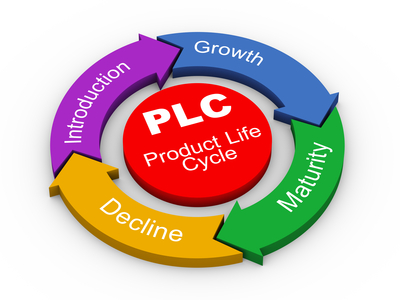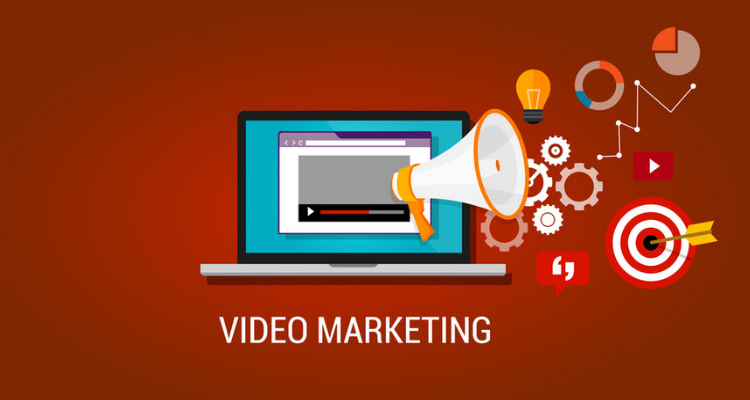So…what is a product life cycle I hear you ask? Is it just another technical term some grumpy old, elbow-patched academic has dreamt up? The short answer is no. Every self-respecting marketing professional should have at least a basic knowledge of the product life cycle and (ideally) how to make it as long as is humanly possible.
So, let’s start with the basics. To say that a product has a life cycle is to assert four key things: products have a limited life; product sales go through distinct stages, each of which presents different challenges and opportunities; profit margins change throughout the life cycle; and products require very different marketing strategies in each stage of the product life cycle. As a (competent) marketing professional, your positioning and differentiation strategy should change as the product, market and competitors change over the product life cycle.
Now we’ve got that sorted, let’s define the four stages of a product lifecycle. As you might have already guessed, the first stage is Introduction. This stage is generally characterised by slow sales and probably non-existing profits (due to the heavy cost of product innovation, manufacture and launch). Next up, we have stage two: Growth. This is everybody’s favourite stage, mainly due to the substantial improvement in profits as a result of rapid market acceptance. Stage three is the not-so-glamorous Maturity. During this stage, we often see a slow-down in sales growth and profits stabilise or decline; the product has achieved acceptance by most potential buyers. Last (and definitely least) we have Decline. This stage (much like the name suggests) is characterised by a drop in sales and an erosion of profits.
Now, before we go any further down the rabbit’s warren, we should point out that there are some limitations to the product lifecycle theory. First of all, not all products or brands will necessarily follow such a symmetrical pattern. Just as importantly, the length of the product lifecycle can be difficult to estimate and can vary extraordinarily between products, brands, countries (and any other variable you dare to name). It is also important to keep in mind that the product lifecycle can be manipulated, changed or extended by management (and by effective marketing). For example, you might promote heavily during Decline to lengthen a product’s lifecycle.
Products may not even go through a lifecycle. The life of a product might be classified more as a style or fashion (which the cycle characterised by distinctiveness, emulation, mass fashion and then decline). Or, they could even be a fad; the product might come into public view very quickly, be adopted with great zeal, peak early and decline very quickly.
Hopefully by now, everyone is clear on the concept of products having a life cycle. We will move on to the next step….marketing strategies for each stage of the product life cycle.
Introduction: promotional expenditure should be at its highest ratio to sales during this stage. We need to inform potential customers, induce product trial and secure distribution through retail outlets. Marketers should focus on customers who are the most ready to buy: people who are already interested in the product. In terms of specific marketing mechanisms, advertising and publicity or PR are probably the most effective elements of the marketing mix to use during this phase.
It is also important to carefully consider when to enter the market. If you decide to enter a new market first, it may be rewarding in terms of profit and market share. However, it can also be risky and expensive. You will need to educate target markets on what your product is and why they need it (not just that your particular product is better than the competition’s). Most studies tend to indicate that the market pioneer gains the most advantage; Coca-Cola, Hallmark and Amazon were all market pioneers. Consumers usually identify a category of products by the name of the market pioneer (most people refer to cola-flavoured drinks as Coke). There are also production advantages such as ownership of resources, patents and a variety of other barriers to entry.
Growth: Marketers need to maintain promotional expenditure, or even raise it slightly to meet competition and continue to educate the market during this phase. Marketers also need to watch for decelerated growth rates, in order to prepare new strategies. To sustain growth, marketers will often need to do one of the following: improve product quality, add new features or improve styling; add new models and flanker products (different sizes, flavours, etc.); enter new market segments; increase distribution and enter new distribution channels; move away from communications focused on awareness and trial to preference and loyalty; or maybe even lower prices to attract the next layer of more price-sensitive buyers. In terms of specific elements of the marketing mix, we would recommend using more interactive marketing techniques (such as online activities designed to engage clients directly) and word-of-mouth (through publicity, online forums and so on) as well as continued advertising efforts.
Maturity: You will find that most products are in this stage of the life cycle. The main question for marketers in this stage is whether to fight to become one of the top three brands within the market (and make money through high volume, low cost sales) or pursue a niche market (and make money through low volume, high margins). In terms of the marketing mix, personal selling (think door-to-door salesmen) can often be the best bet during this stage. Promotions are also vital (think short-term promotions like coupons, discounts, sales).
Decline: Sales decline for a number of reasons. All reasons tend to lead to overcapacity, price cutting and profit erosion. As a marketing professional, you might be called on to help management decide whether to abandon a product, liquidate a brand, or improve a product and fight back. If the idea is to prolong the product life cycle, then heavy advertising is the way to, maybe with a new, improved version of the product.
Marketing.com.au would like to thank Sally for taking the time to share this fantastic guide with our readers.
About Sally Wood
Having worked in marketing, communications and public relations roles for over ten years, Sally’s past life includes a plethora of activities, some of which even she can’t believe she was lucky enough to try her hand at. There was the development and implementation of internal communication programs for burly construction contractors; PR campaigns to launch The Simpson’s products (which just happened to involve carting life-sized Simpson figures around the country); people (and media) wrangling at Flemington’s birdcage for high-profile clients during the Melbourne Cup Carnival; CSR program design, implementation and GRI-accredited reporting; and, most recently, copywriting and internal stakeholder relations in a most serious corporate environment. Somehow, in the midst of all that, she also managed to get stuck into some study, undertaking a Bachelor of Arts / Law, completing a Postgraduate Bachelor of Letters in Public Relations and Journalism and recently starting an MBA.
Sally Wood
Latest posts by Sally Wood (see all)
- 6 Free Marketing Plan Templates - July 22, 2018
- The Ultimate Guide to Instagram Advertising - June 23, 2018
- Q&A with Amy Cockerell, Marketing Coordinator at the TAC - October 6, 2016








